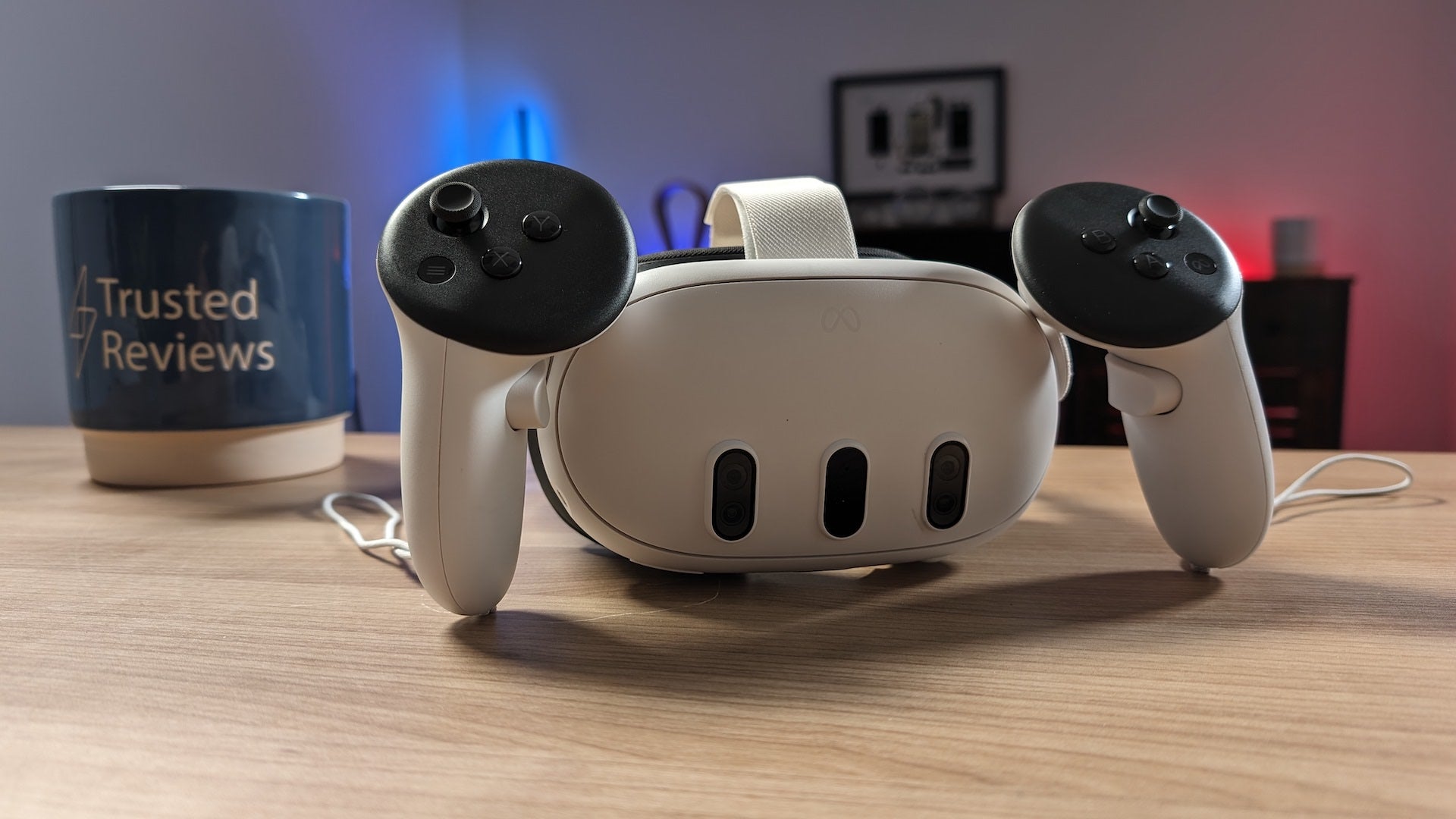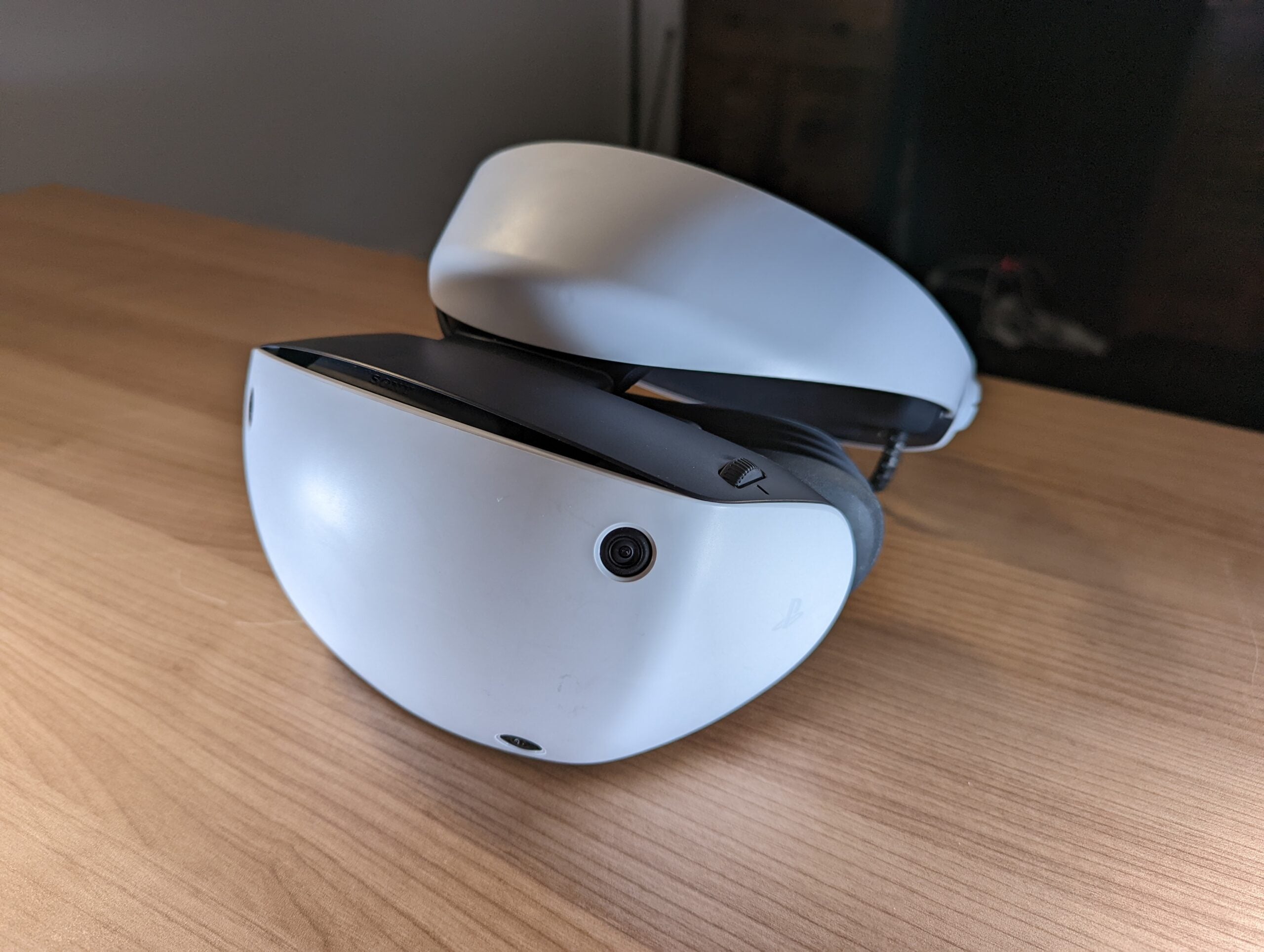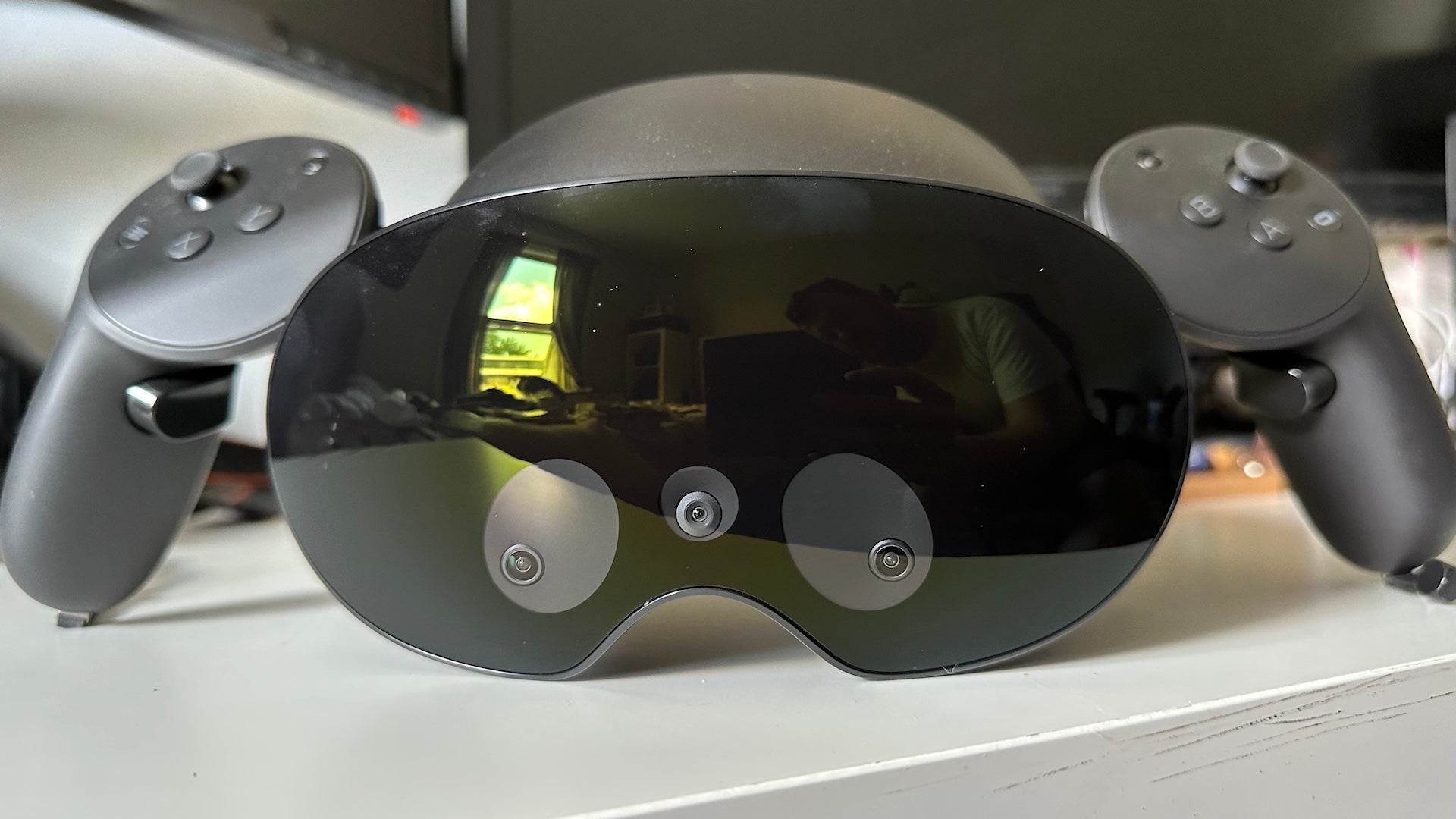Xreal Air 2 Pro Review
Half-baked AR features ruin what could be a fantastic virtual display experience.

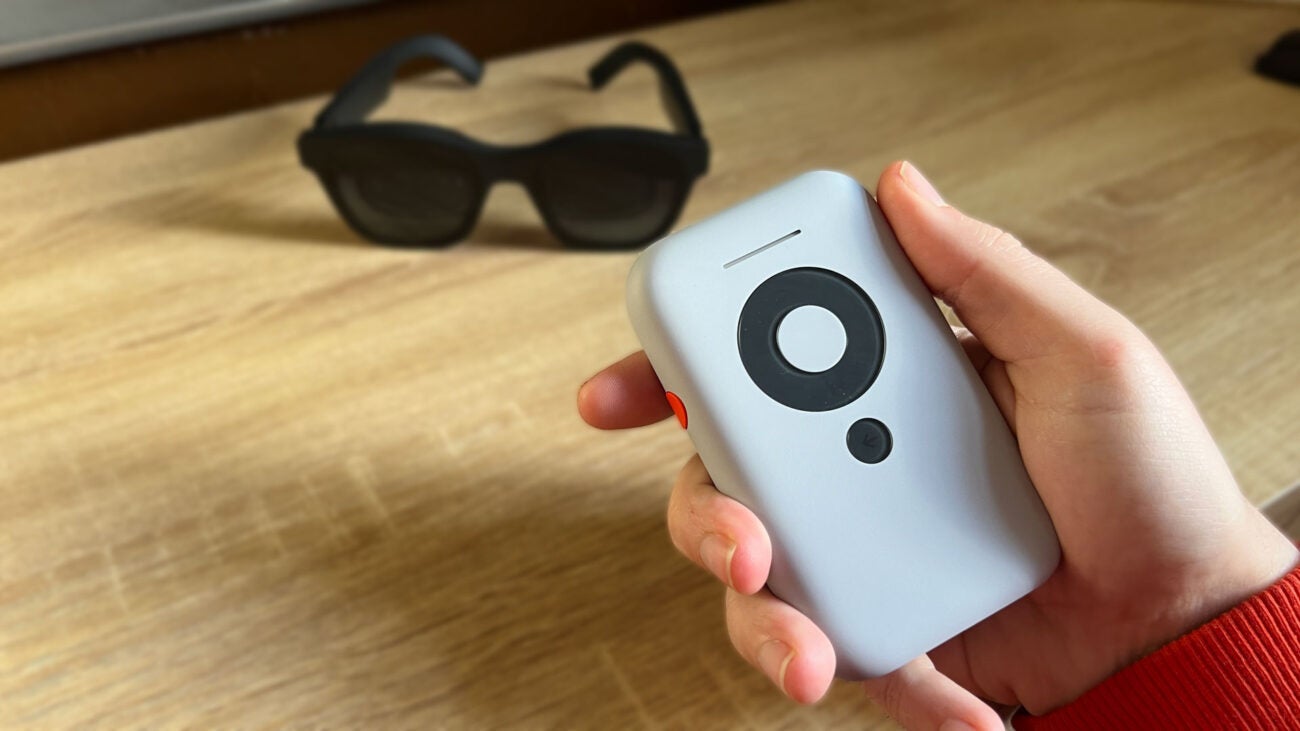
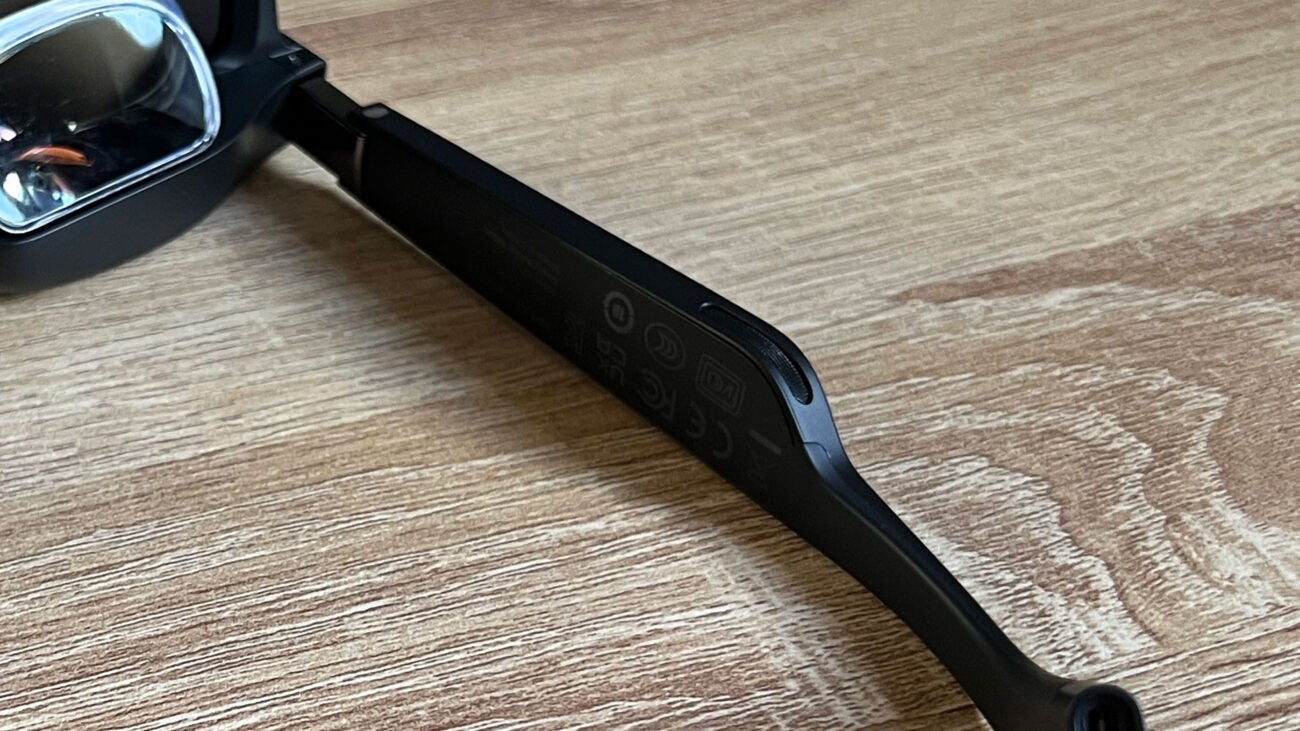
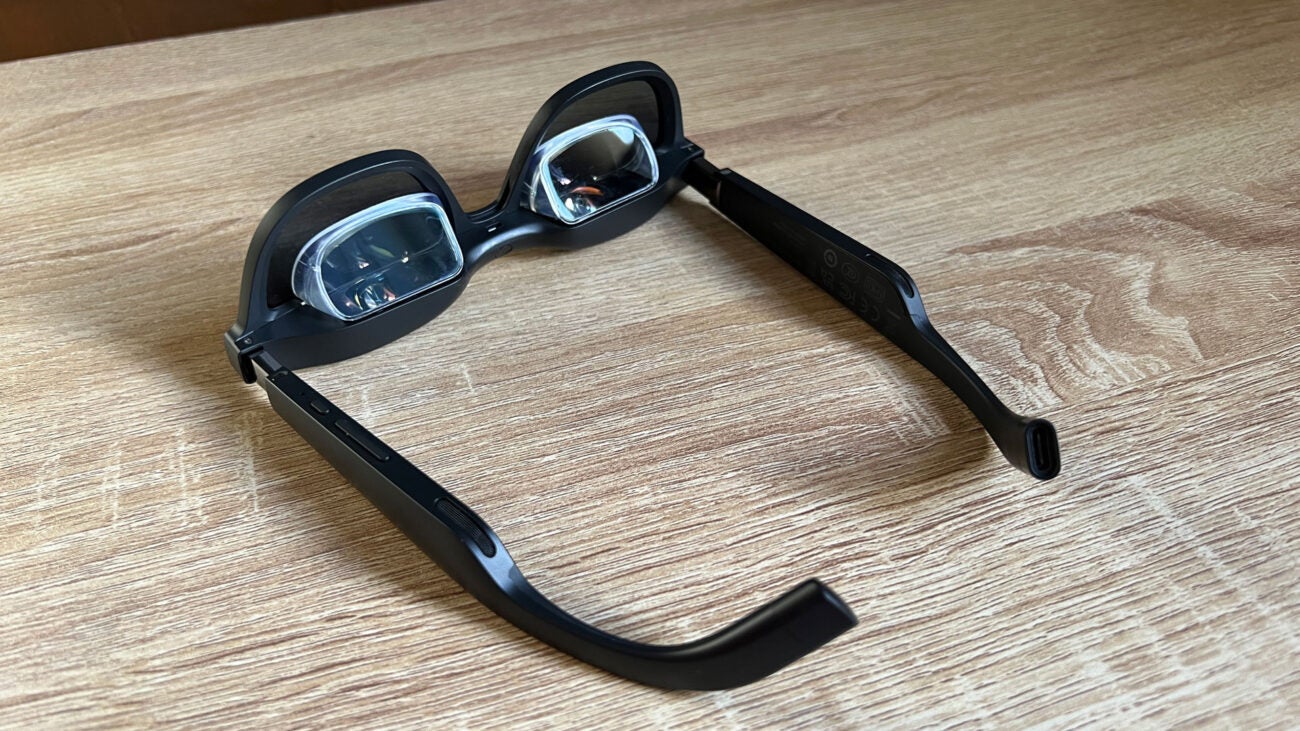
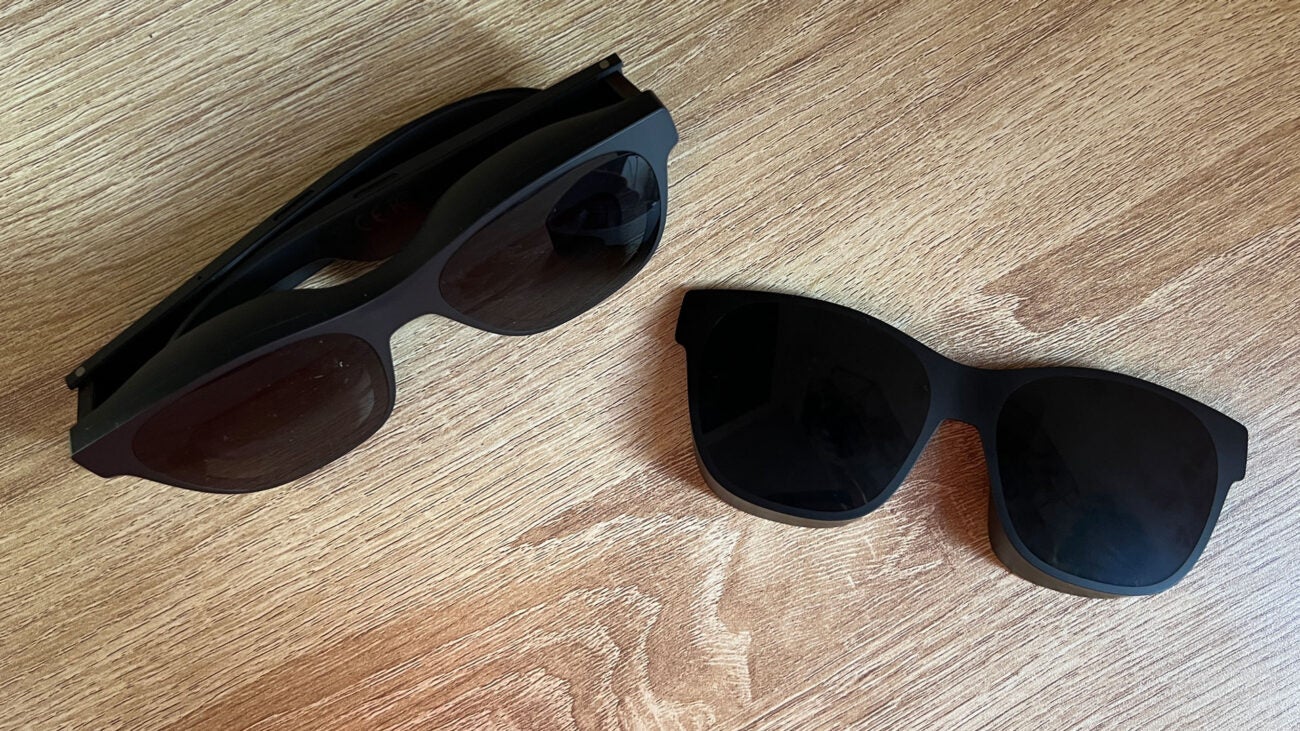
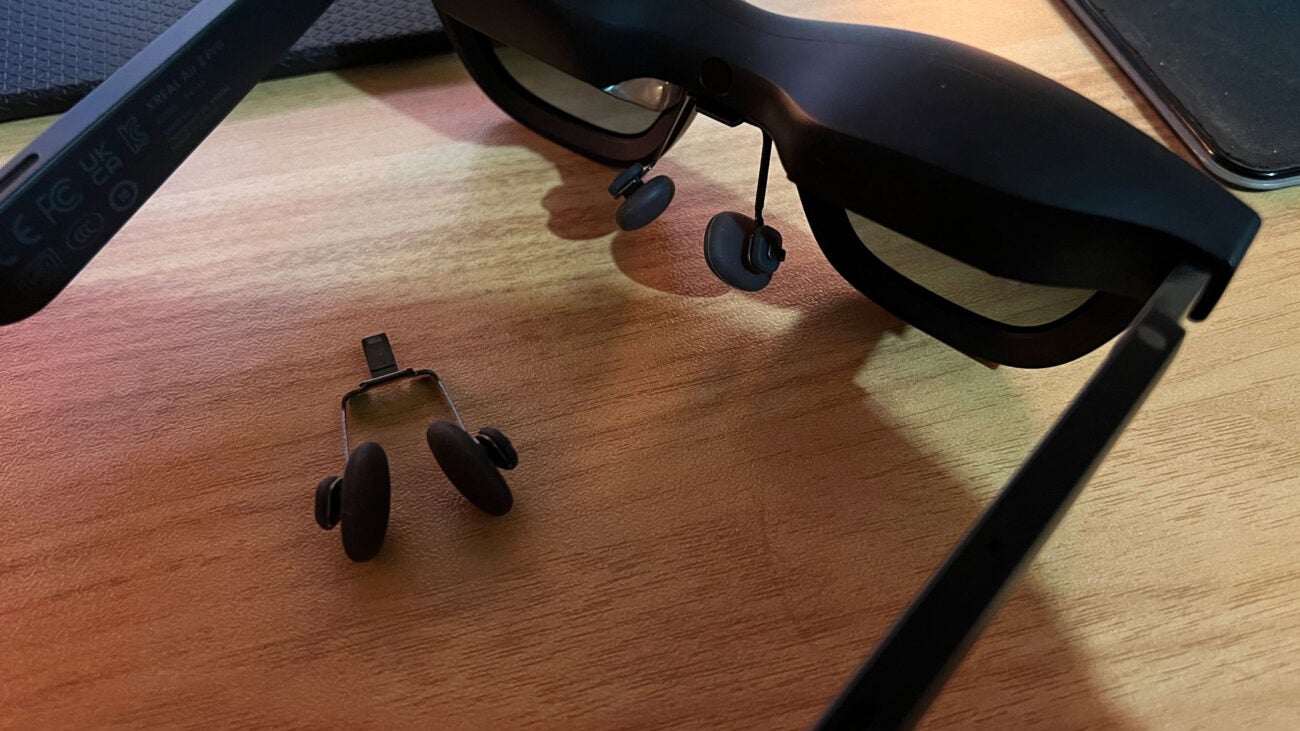
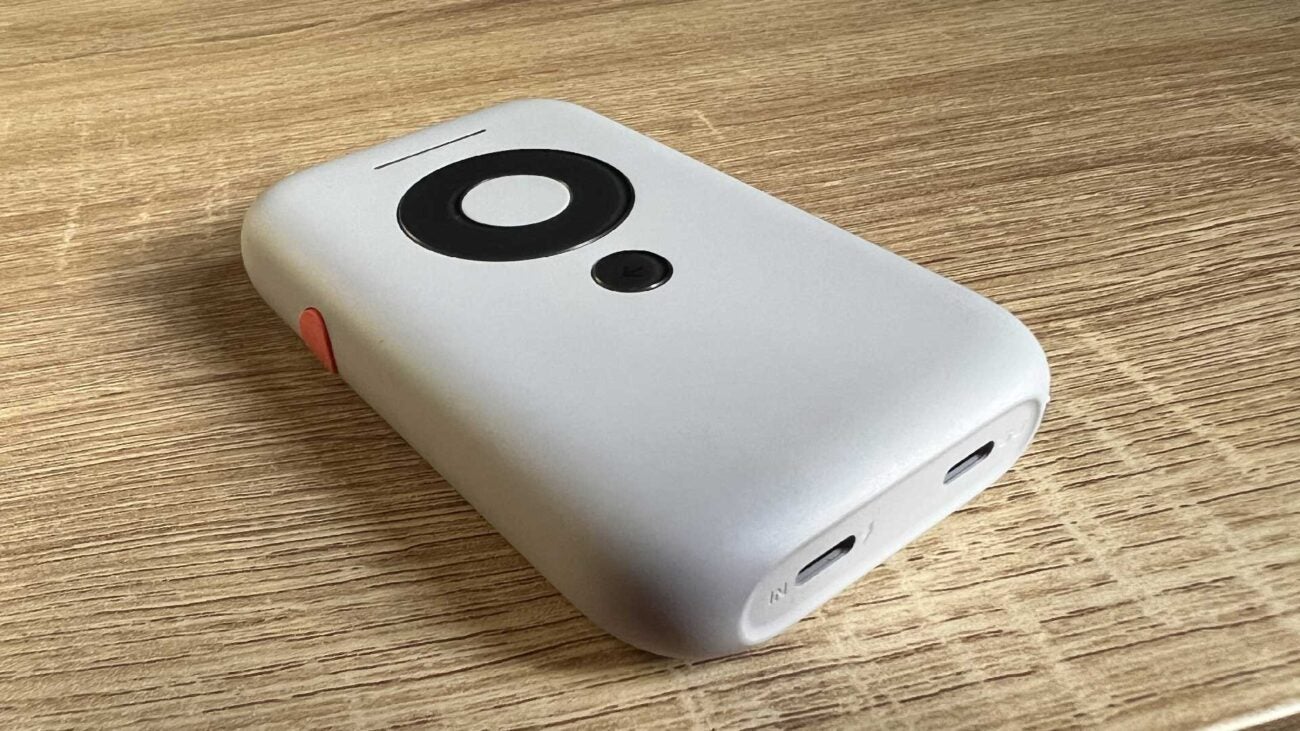
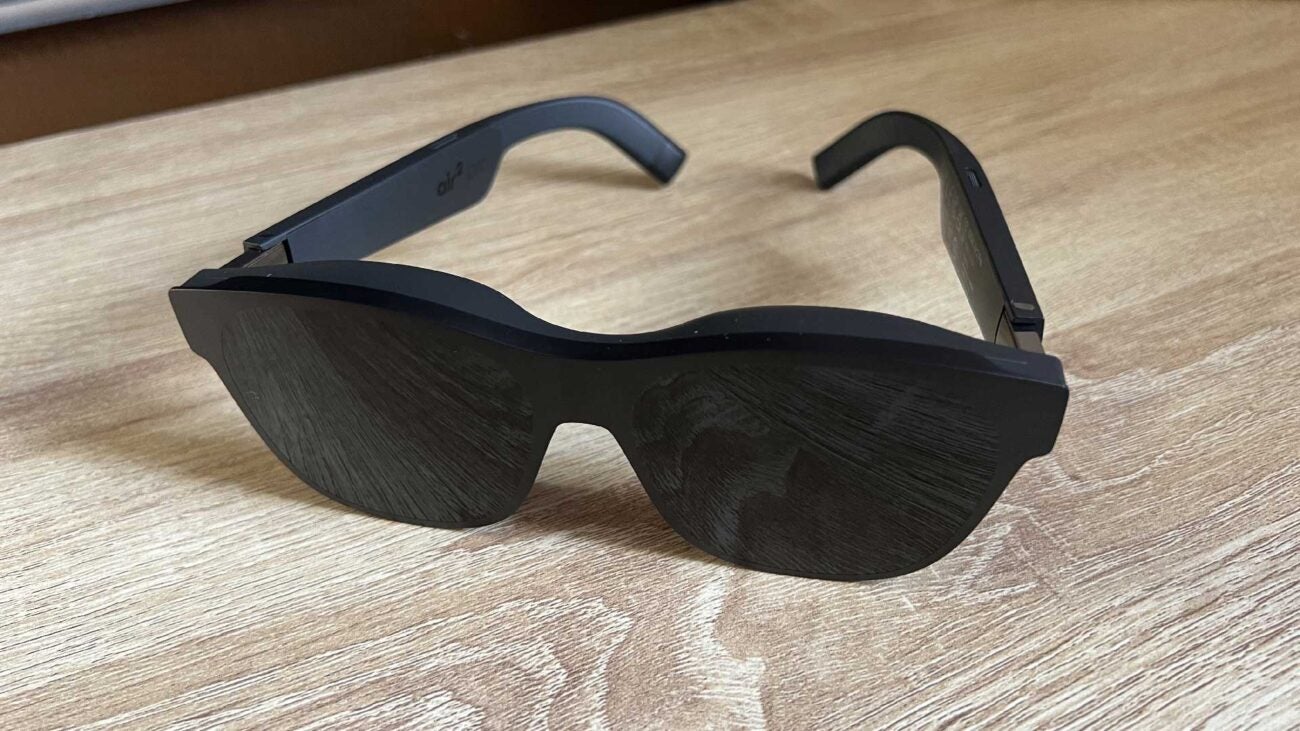
Verdict
With an incredibly bright, clear, fast, and crisp micro-OLED display inside, the XReal Air 2 Pro smart glasses are perfect for certain scenarios. When you try to use them for anything more than static content or without a smart device, however, they start to feel overpriced and out of their depth.
Pros
- Crystal-clear 1080p OLED displays
- Simple USB-C operation
- Good sound
Cons
- Hit or miss fit with limited adjustment
- Basic style
- Limited feature set without an expensive add-on
Key Features
- 1080p OLED displaysThe Xreal Air 2 Pro hides a tiny Sony OLED screen in each lens that supports a crystal-clear and punchy picture at 1080p image at up to 120Hz.
- USB-C connectionThe Xreal Air 2 Pro smart glasses can connect to anything that supports display output through a USB-C port.
- Built-in headphonesTo compete the package, the Xreal Air 2 Pros feature two speakers on either temple to produce powerful audio.
Introduction
The Xreal Air 2 Pro smart glasses look to improve upon earlier versions from Nreal (now Xreal) with brighter, more beautiful internal displays and smart electrochromic dimming capabilities. But is it enough to warrant an upgrade, or is this merely a more polished product than what came before?
Next to the emerging smart glasses niche, these television-in-your-eyes frames are incredibly impressive. The screens tucked away inside them offer superb image quality.
But if you think they’re out to become your go-to wearables outside of the house, you’d be mistaken. Getting the fit right is difficult, with only so much adjustment allowed. And if that fails you, the whole experience just won’t go your way.
Unless your use case suits these £449/$449 specs to the tee, they’re too finicky to recommend to a wide audience wholeheartedly. However, if you want to connect a Steam Deck and game the night away, they might be brilliant.
Design and fit
- Limited adjustment
- Simplistic looks with a relatively bulky frame
- Different styles only available in solid colour stickers
At 79 grams without the necessary cable attached, the Xreal Air 2 Pro smart glasses aren’t exactly lightweight. They’re carrying the weight of two small screens inside, after all. But with no internal battery and most of the processing done in an external device, the heft may still surprise you.
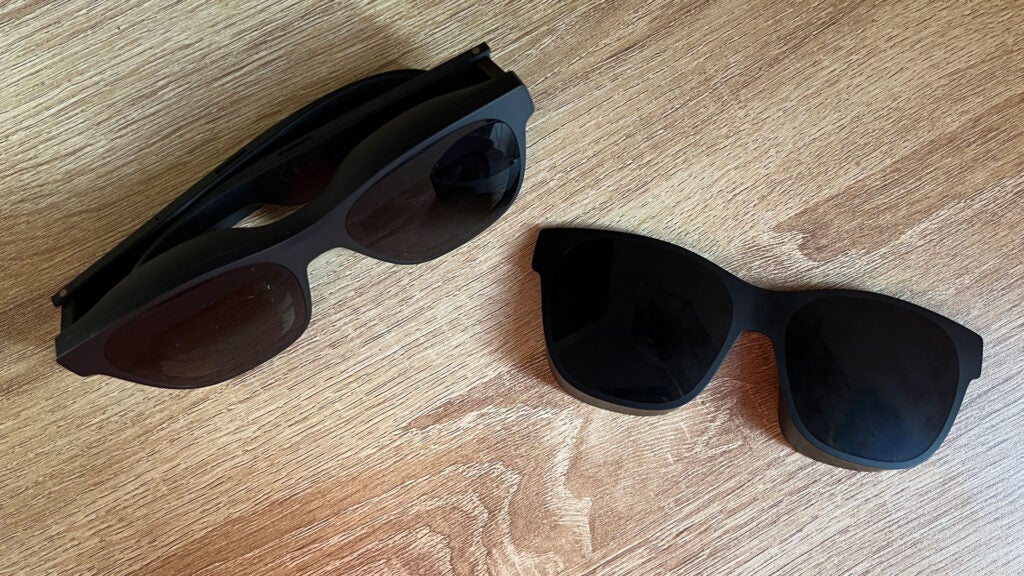
These thick black frames look almost like gag sunglasses out of the box. The reason for that, though, is practically down to the removable front shade that creates a flush look where there would usually be a distinction between the lenses and frame.
Designed to block out more light to increase immersion, you can easily pop it right off to have the Xreal Air 2 Pro frames look a little less cartoony – and ready for some light mixed reality use.
With three different sizes of nose pads included and even a prescription frame insert, there are a couple of adjustments you can make to have the Xreal Air 2 Pro frames fit nicely on your face. They’re tucked away in the box, nestled into tiny cardboard pockets that are easy to miss, but they’re a new (and welcome) addition.
There’s a tool included to switch between them, but you can wiggle them free with some light pulling. That makes it all essentially toolless, which is always nice.
That said, I couldn’t find a pair of nose pads that would properly fit my snout. Not because they weren’t comfortable – they’re quite nice, actually – but because they lifted the frames too far up my face.
There’s a very specific viewing angle you need to maintain for the micro-OLED displays to be fully visible, and unless I had the glasses sitting on the tip of my nose, pinching my nostrils and peering down at an uncomfortable angle, I could never see the full picture with the inserts.
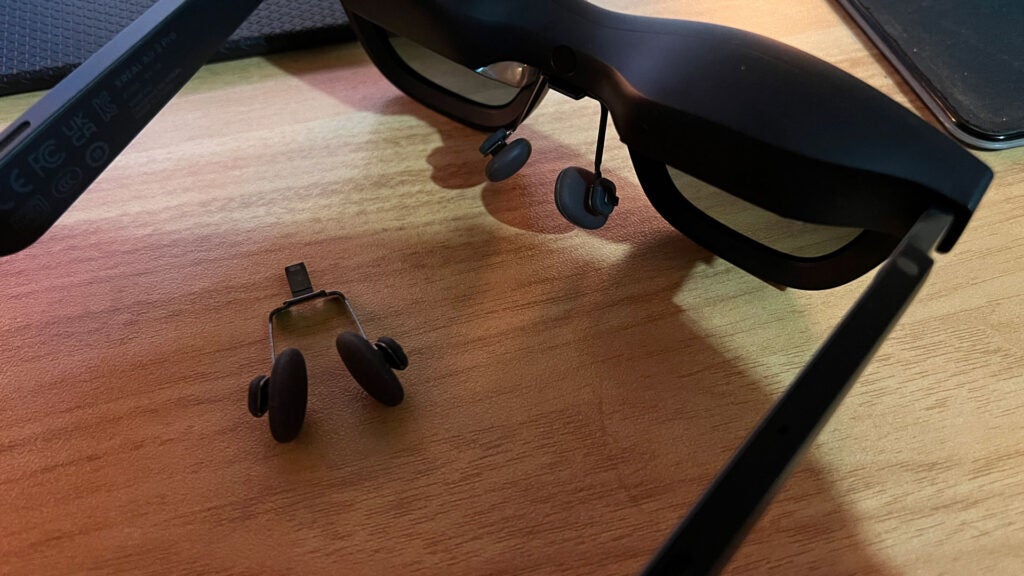
The only thing that worked for me was removing the nose pad entirely, which while getting the job done, meant the top of frames were always sitting directly on my brow, brushing my eyelashes whenever I needed to gaze at the top of the 120-inch screen projected straight into my eyeballs. It’s useable, but not great.
Even adjusting the angle of the temples by cracking them up or down (which I don’t feel was well documented, and feels horrible to do) couldn’t salvage things.
Smart features
- Electrochromic dimming lets you see the world
- Features depend on the connected device
- No external camera or real AR functionality
The Xreal Air 2 Pro glasses handle very little on-device. The heavy lifting is all managed by whichever device you hook up to them. They’re essentially just screens and speakers stuffed into a wearable frame. On their own, they’re not even capable of turning on.
Getting up and running means connecting the angled side of the included USB-C cable to the tip of the left temple, with the other end plugging directly into a device. Which device is entirely up to you, but it needs to support DisplayPort over USB-C.
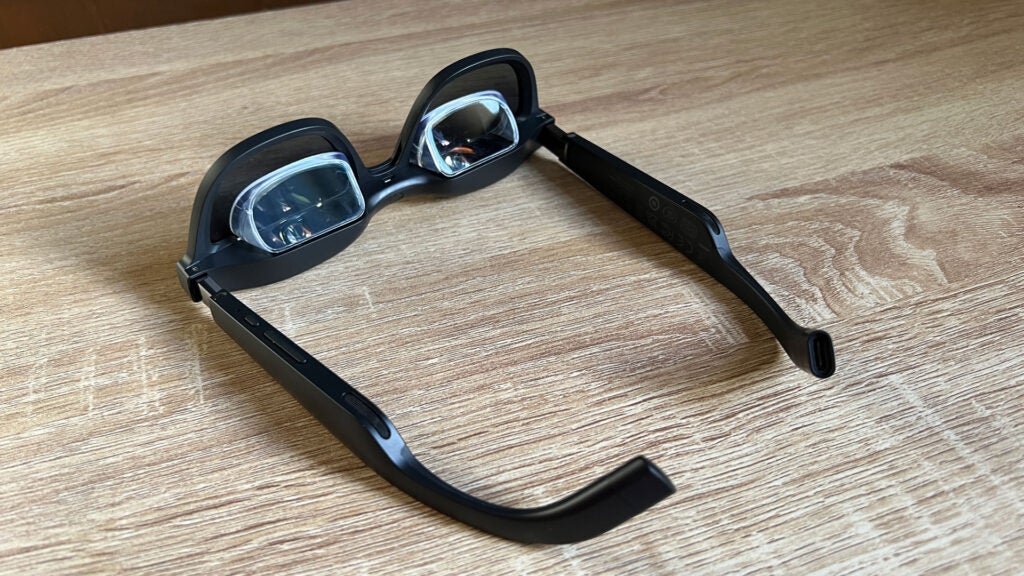
Most modern laptops and portable PCs like the Steam Deck or ROG Ally will do this without issue, but Android phones and tablets can be a little hit or miss. It’s a feature largely locked to the more expensive models and seldom documented. For recent Apple devices with USB-C like the iPad Pro or iPhone 15, it’s plug n’ play. Connect the two up, slap the glasses on your face, and you should have a second display ready to go.
In this mode, the XReal Air 2 Pro glasses can display a smooth 120Hz 1080p image right in front of your eyes. Compared to the older versions of the Xreal specs, the micro-OLED screen is physically smaller, making it essentially more power-efficient and colour-accurate.
It can also get brighter at a supposed 500 nits rather than 400, which can be tweaked in incremental stages with the brightness/volume rocker under the right temple. It’s still an 8-bit non-HDR display, but you honestly wouldn’t notice. It looks fantastic.
On the Xreal Air 2 Pros specifically, you can use the electrochromic lenses to allow more light through the frames. This way, you can see through them to a certain point. You’ll still have a hulking display in front of you, but the fancy feature can be used with specific setups and accessories to allow for light mixed reality use. More on that in a bit.
Audio
- Clear stereo sound
- Respectable audio leakage
- Support for DTS with the right accessories
Simply managed through two speakers, top and bottom on either temple, the Xreal Air 2 Pro’s audio game is solid but not exemplary. Next to the Huawei Eyewear 2, it lacks bass and sometimes volume which, given these are designed for giving that cinema experience, feels a tad underwhelming.
Interestingly, audio playback was choppy when connected to my iPad Pro. The picture was as sharp as ever, but sounds coming back through were garbled. It was a one-off experience that I’ll forgive, but it’s something to keep in mind. A new set of specs doesn’t mean all the bugs have been addressed. In fact, it could have been the iPad’s fault. We’ll likely never know.
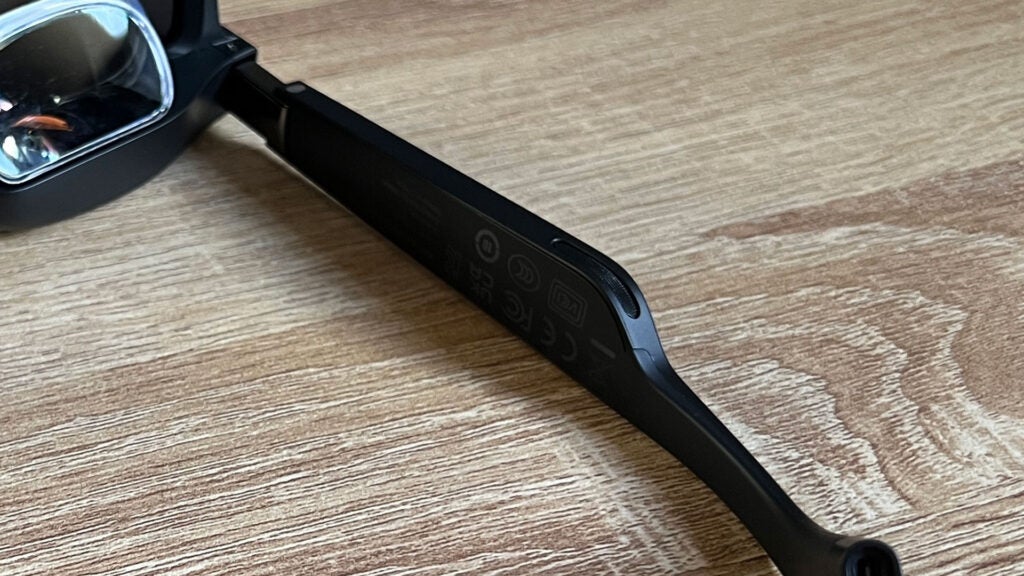
All in all, there are just too few speakers to give the loud and full-bodied sound you might expect from a pair of specs claiming to give that cinema experience in a tiny, wearable form factor. Other sound-focused smart glasses, like the Huawei Eyewear 2 and Ray-Ban Meta glasses can deliver a similar experience in a thinner, lighter frame. The quality is far from being bad – there’s just clear room for improvement.
Sound leakage is still present here at higher volume levels, but it’s relatively well-contained when compared to something like the budget-oriented AJ01 smart sunglasses.
If it weren’t for the fact that you’ll always be hooked up to another device that can handle sound through earbuds or cans, I’d be asking for a 3.5mm jack and Hi-Fi DAC in the next iteration to cap off the private viewing potential the specs lend themselves to.
Accessories
- Increased device compatibility requires separately purchased add-ons
- Xreal Beam is underbaked and under-supported
- Kaleido stickers look terrible
With only USB-C support out of the box, it takes another accessory to enable broader compatibility between the Xreal Air 2 Pro and devices like game consoles and older Apple devices.
In the simplest form, you can use the Xreal Adapter to manage this. It’s a small £50 add-on that does little more than convert an HDMI signal to run through the USB-C cable.
Again, because the Xreal Air 2 Pro glasses contain no battery of their own, it’s down to a 2600 mAh cell in the Xreal Adapter to do that, meaning you’re always against the clock when hooked up to something like a PlayStation 5 or Xbox Series X.
The adapter providing power means it’s also capable of triggering the docked mode of a Nintendo Switch, finally allowing for that connection as well. For iOS devices without USB-C, Apple’s own adapter is required on top. It’s a pain, but it’s cheaper than the more capable alternative – the Xreal Beam.
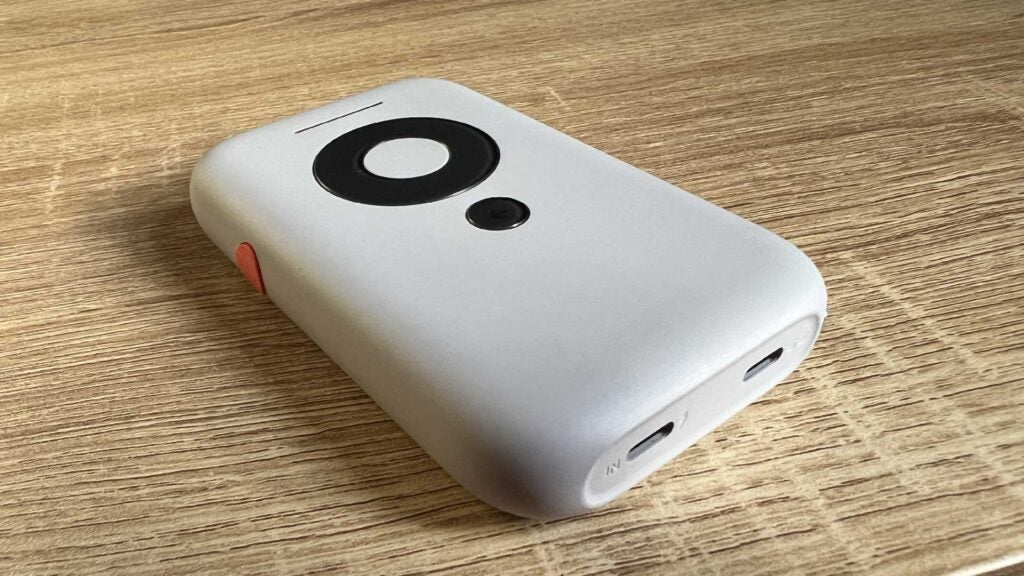
The newest solution to the conundrum of the Xreal spec’s lack of any internal battery or processing of its own is the Xreal Beam.
It’s a solidly built power bank that offers the same connectivity options as the Xreal Adapter, but it also packs the processor needed to run select apps and experiences, potentially removing the need to connect a smartphone. With Miracast built-in, you can still beam content over from your smart device while it’s in use – which is typically needed given the horrendous app support built into the thing.
In the UK, the Xreal Beam ships with only Netflix and Amazon Prime. In North America, I hear there’s maybe Hulu. But that’s it. There’s no app store, and despite word online that more apps are coming, there’s absolutely no timeframe given, which doesn’t instil much hope. You can technically sideload Android APKs, but no Google support means YouTube is a no-go. Bummer.
Further to that, it’s a loud little device. If you hope to watch a little Netflix in bed, the sound of the fan spinning stands a better chance of keeping your partner awake than the sound leakage. Sure, it brings the Smooth Flow and Sideview screen modes with it, but there are far fewer levels of adjustment here than with the Nebula app.
There’s a lot of talk about perceivable screen size and distance adjustment as well, but because you’re typically watching things in a dark, empty void, the sense of scale is negligible. You’ll never think it’s a large cinematic display like you would in VR. Instead, it’s just a screen that fills your vision. Because these are glasses and not goggles, light bleeding in from the side detracts from any spatial effects.
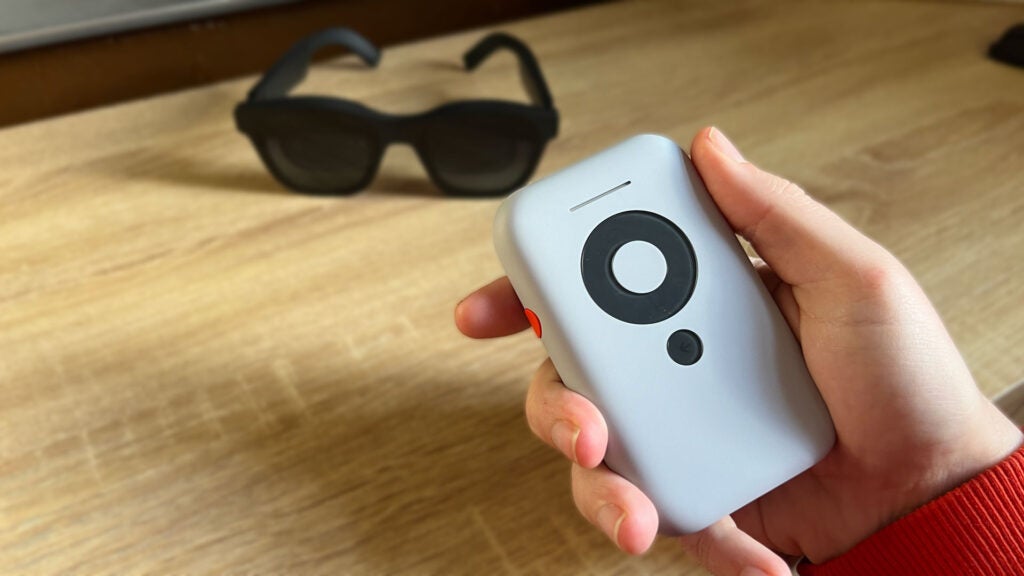
At £120, it’s likely cheaper than buying a phone that supports DP over USB-C if you don’t have one already. Still, with software so barebones and underbaked, it’s only worth the trouble if the few apps included are all you need and you plan on using it to hook up HDMI devices.
Otherwise, you’re just creating a mess of cables that risks having the Xreal Air 2 Pro glasses repeat the mistakes of early cumbersome VR headsets.
MR experience
- Nebula app has promise but doesn’t feel finished
- MR sideview is barebones
To use the limited mixed reality experiences available with the Xreal Air 2 Pro smart glasses, you need one of two things – the aforementioned Xreal Beam add-on available at around £120 (or slightly cheaper when bundled together) or the free Nebula app.
With no camera wedged into these, you won’t be snapping photos and videos like with the Ray-Ban Meta specs as you go about your day in style. Instead, the Nebula app essentially turns your glasses into a sit-down hub for a better user experience when hooked up to an Android or MacOS device. With no Windows or iPhone version available as of yet, it gives the Xreal Beam and Adapter accessories a reason to exist as well.
The app powers experiences like multiple adjustable windows in a 3D space, turning your phone screen into the controller. You won’t be swinging it around to play Fruit Ninja like on a dedicated VR headset, but it’s suitable for relaxing on the couch or in bed, ridding the need to peer through the lenses and at your phone again whenever you need to control your apps.
The app itself is relatively clunky and barebones, however. If you want to watch YouTube without switching back and forth between your devices, it works well enough. But without something as simple as rendering a 3D space for a “theatre” view, you’re often left in a dark abyss with a large screen stapled in front of you.
While you’re in this, you can toggle the electrochromic dimming of the lenses so that you’re able to position a screen in your peripheries while you go about something like household chores or cooking. Again, it works well enough, but it’s still too cumbersome for prolonged use.
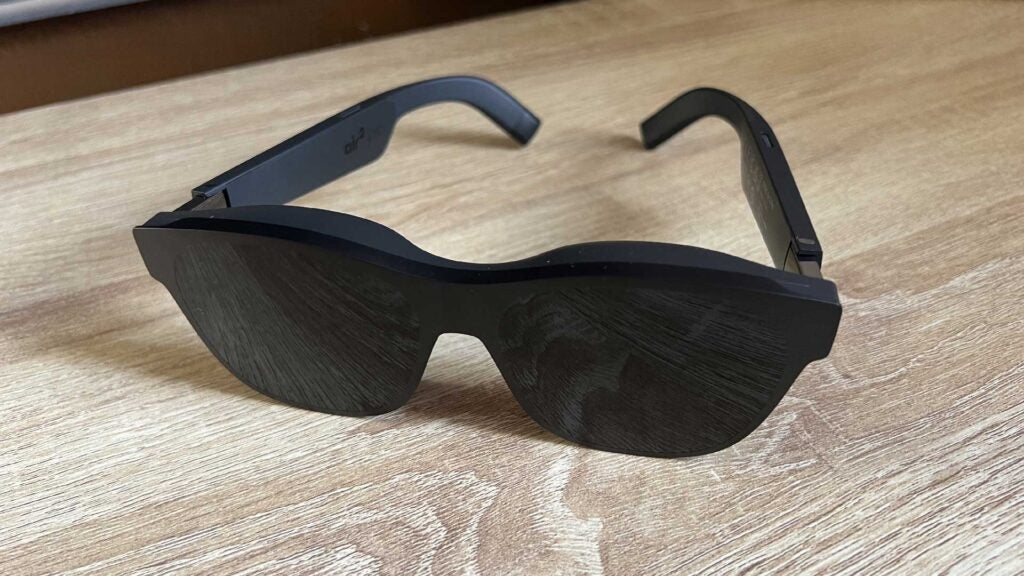
The real star of the show is how well the electrochromic dimming works in brightly lit environments. The image is always shockingly clear, no matter the scenario.
However, it’s not the most straightforward device to use. Aside from the lack of an iOS app, differing screen sizes depending on what’s being displayed and the lack of an app storefront on the Beam, it’s hard to get certain features and functionality to work.
In my quest to figure out how to get the advertised 120Hz refresh rate running on anything but a PC, I had to turn to Reddit to get an answer. Apparently, you need to manually enable it through a 6-second press of the volume-up button. That same button does something else if pressed for only 3. It beeps twice instead of once to signal the switch. But did it actually work? No. The search continues.
And that’s the biggest gripe of the whole Xreal experience. It’s muddied by unclear instructions and vague ideas. I was still figuring things out weeks after receiving them. That’s the opposite of intuitive, and an ironic example of unclear vision.
Right now, it feels like the team is focused on adding half-baked features to justify the high price tag, when in reality, it’s those wishful ideas that end up making the whole deal feel not worth the asking price.
If Xreal could offer the same micro-OLED specs at half the price, bake the adaptor in for HDMI support, and market the package as a plug n’ play 120Hz screen on your face, I’d have no complaints. Alas, they’re a gadget trying to be too many things at once. A jack of all trades but a master of none, if you will.
Battery
- Sips power when connected to a mobile device or PC
- Battery life through accessories depends on the use scenario
- Xreal Beam and Adapter provide similar runtimes
As the battery of the XReal Air Pro 2 is actually whichever device you have it hooked up to, runtime will vary greatly.
You might think powering two micro-OLED screens would spell disaster for your connected device, but in practice, my Steam Deck suggested 5+ hours of playtime in the strategy management game Against the Storm. This was at a relatively low resolution and refresh rate, but it was enough to suggest that the Xreal Air Pro 2 only lightly sips power.
When relying on the Xreal Beam’s 4870mAh cell, you can keep playing for around 3-4 hours of average use. All of this will depend on things like screen brightness, refresh rates, and the type of content you’re consuming, which is why you’ll get a similar amount of juice through the Xreal Adapter as well. The extra processing of the Xreal Beam is why that battery is a little bigger.
If you’re not wiring up a game console or other device, the second USB-C port is free to charge the XReal Beam as you use it. Just be prepared for that fan to kick into high gear. You can see the battery percentage on the app selection screen, but there’s also a neat horizontal LED bar on the face of the Beam that visibly fills and empties.
Without an included charger alongside the Beam, you’re left to rely on what is likely your phone or tablet plug. If you’re rocking lightning Apple devices, that’s another expense. Supporting up to 27w charging, you can juice it back up to full in around an hour. If you’re casting media from another device over the air, you can even charge as you go.
Latest deals
Should you buy it?
You want a big, private, portable display
If you frequent trains, planes, or value your space, you might love these for private productivity. They’re a great Steam Deck accessory, too, but they match the price.
You want a proper AR/MR experience
As much as they claim to be mixed reality specs, the Xreal Air 2 Pros are still screens inside a frame and little more. Software magic attempts to add value, but can actually sour the experience.
Final Thoughts
The £560 asking price for the Xreal Air 2 Pro and Beam combo is difficult to justify for most. It’s incredible to have a brilliantly clear, private 120Hz 1080p OLED TV sitting on your bedside table, but the barely usable software features make it feel disjointed and overpriced.
These glasses will rightfully serve those who can seldom use their TV or need a great space-saving feature for a small rented space. For anyone else, they’re a luxury item you’ll quickly grow tired of fiddling with, with an older, cheaper (or used) model likely serving the very same purpose. They’re really not that different.
As a quick gateway into big-screen gaming with a handheld device, there’s reason to love these glasses. But attempt any AR/MR features or find the desire to hook up a home console and the cracks begin to show. If the idea of a big screen on your face makes you giddy, weigh the price tag next to the mental cost of juggling those connections whenever you need to use the glasses over a traditional television.
How we test
When testing a pair of smart glasses, we thoroughly test all the available features, be that audio, camera tech or even smart displays, evaluating various aspects like performance, battery life and comfort.
Used with a variety of devices over a few weeks.
Tested against similar products and solutions.
FAQs
No, these need some kind of external device to operate (Smartphone/laptop, Xreal Beam, or Adapter).
Through a USB-C connection, the glasses will support 120Hz, but this depends on the connected device.
Mostly, the difference boils down to weight, the physical size of the screen inside, and the addition of Electrochromic dimming in the lenses.

